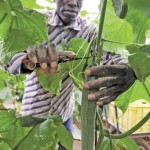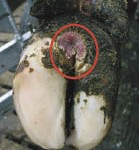A small-scale study of hog barn workers in North Carolina found nearly half carry livestock-associated bacteria in their noses, and that this potentially harmful bacteria remained with them up to four days after exposure. Researchers with the Johns Hopkins Bloomberg School of Public Health tested 22 workers over a period of two weeks during the








